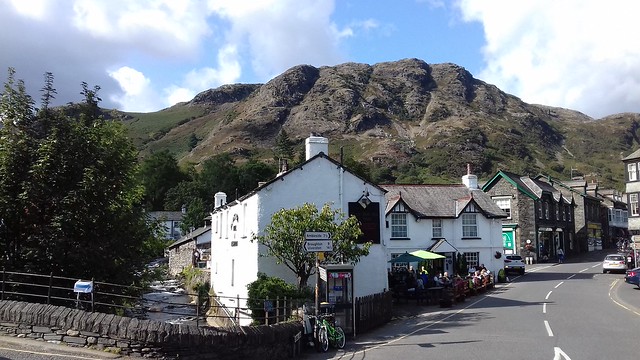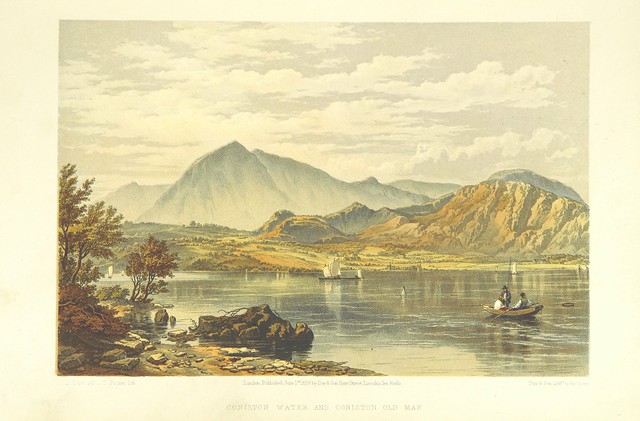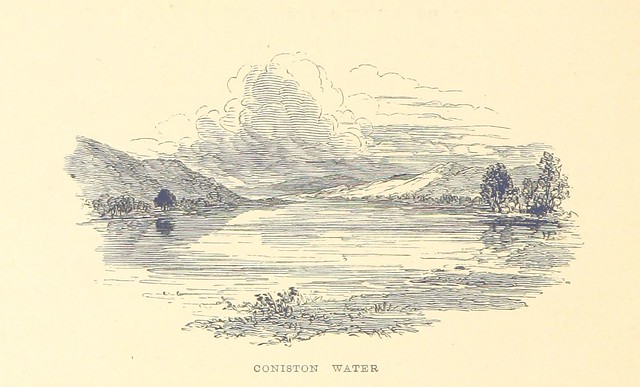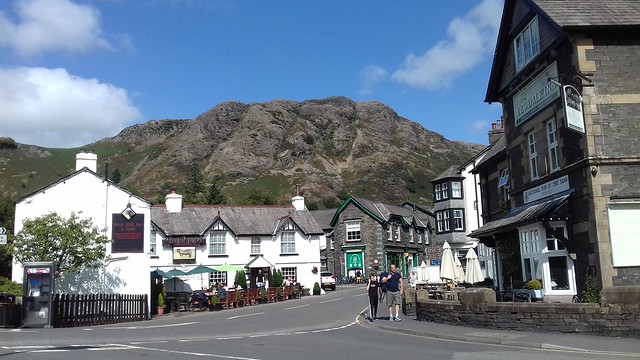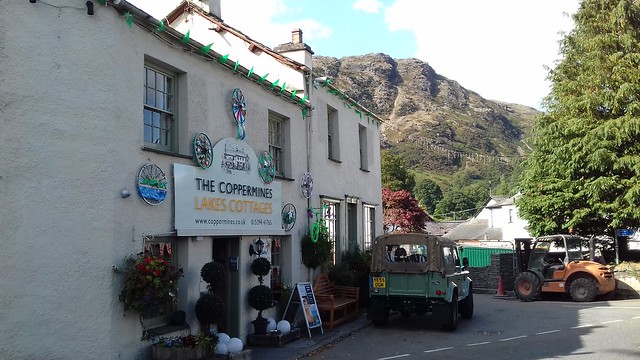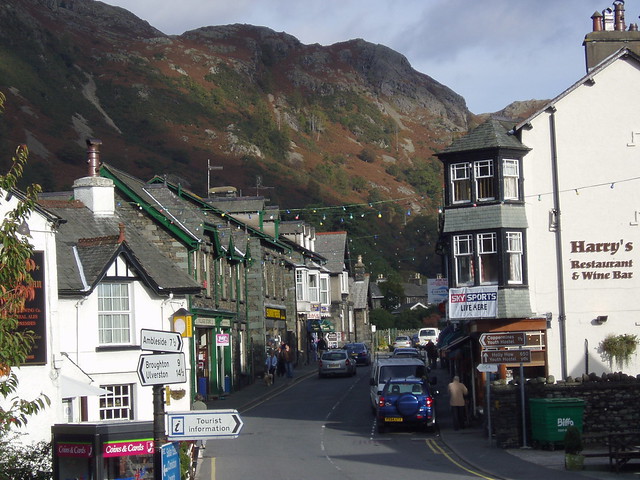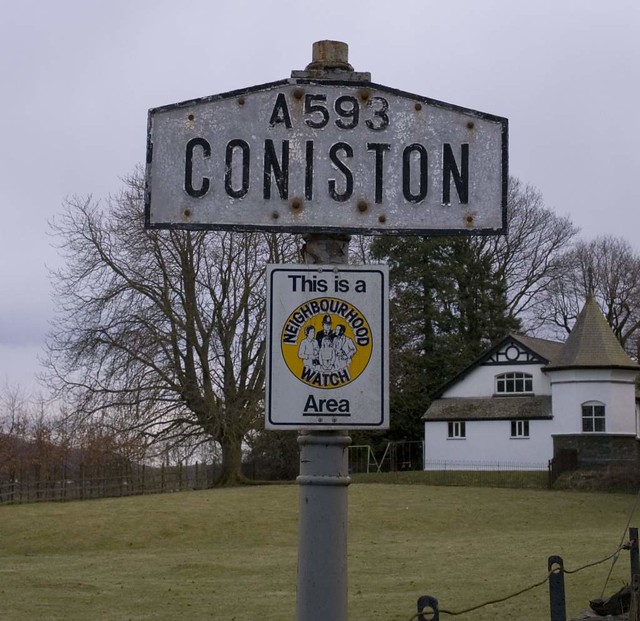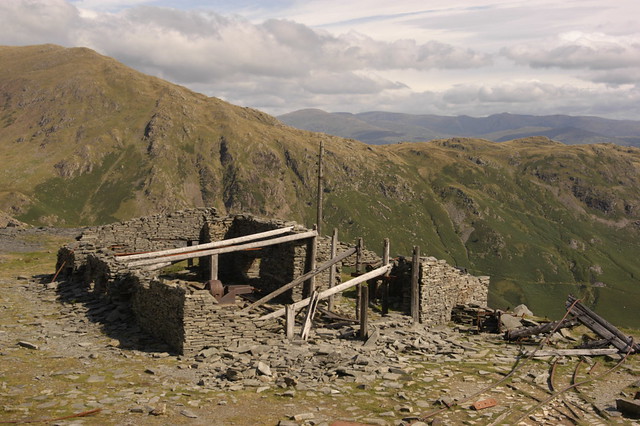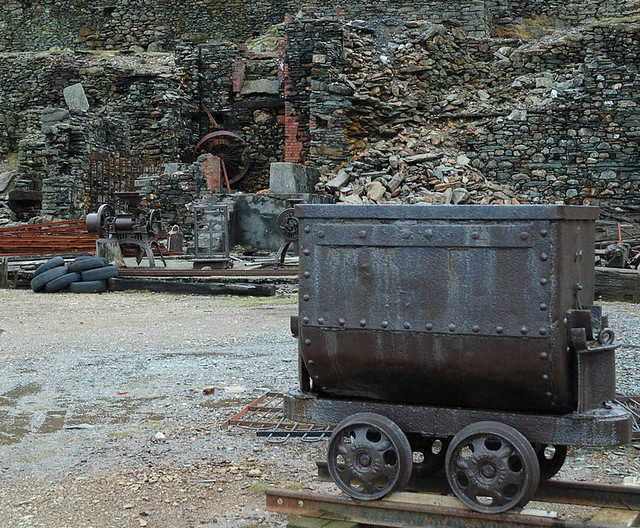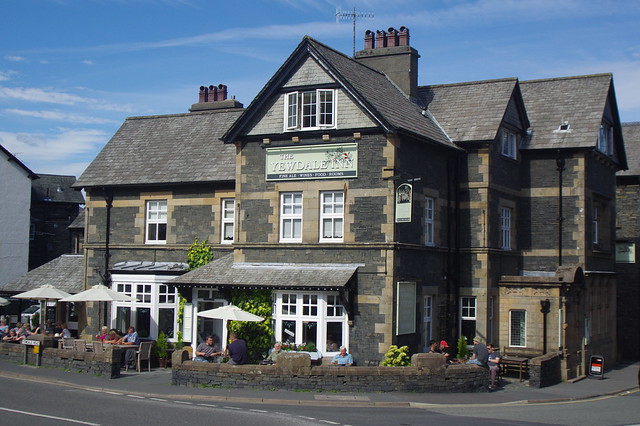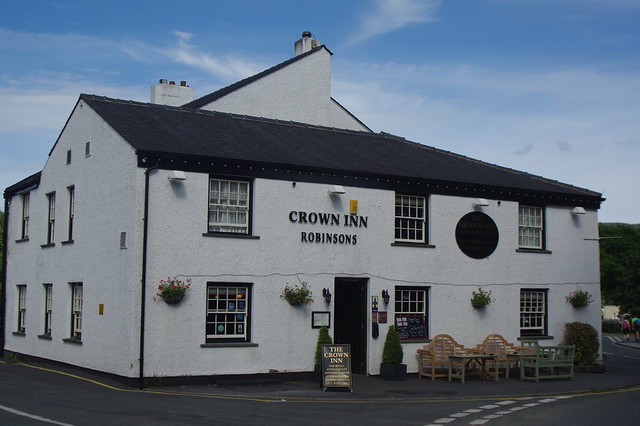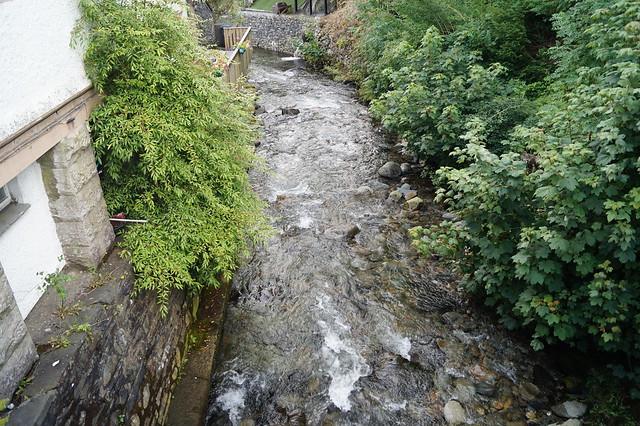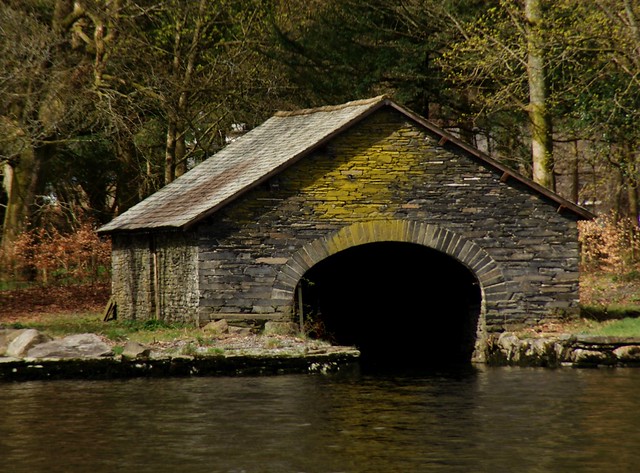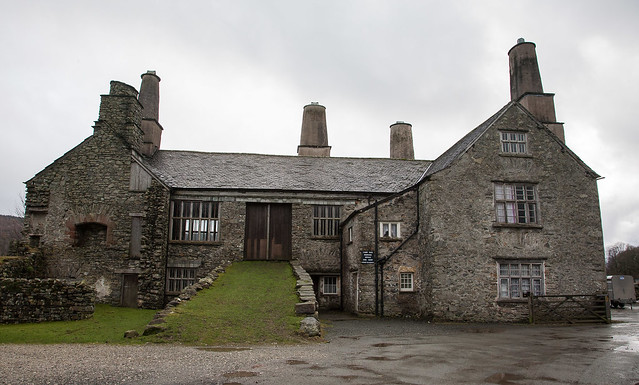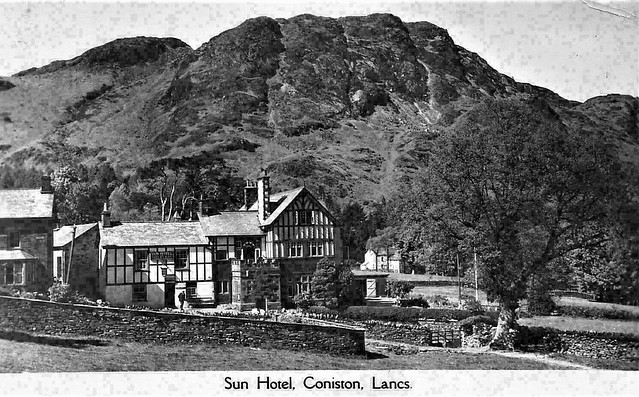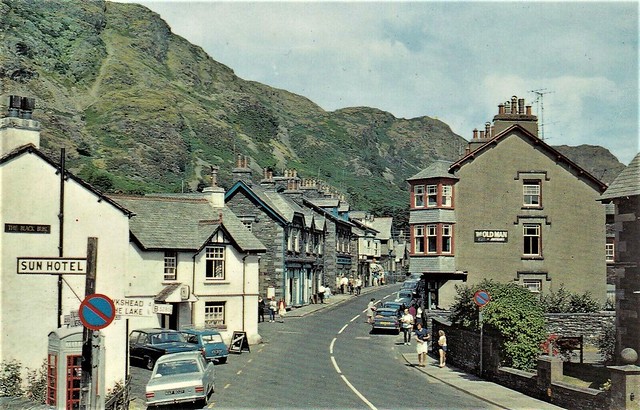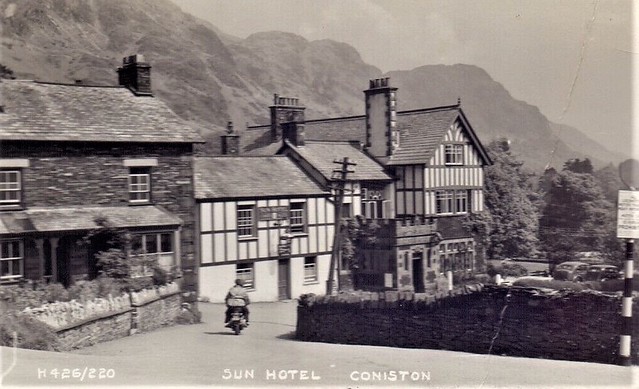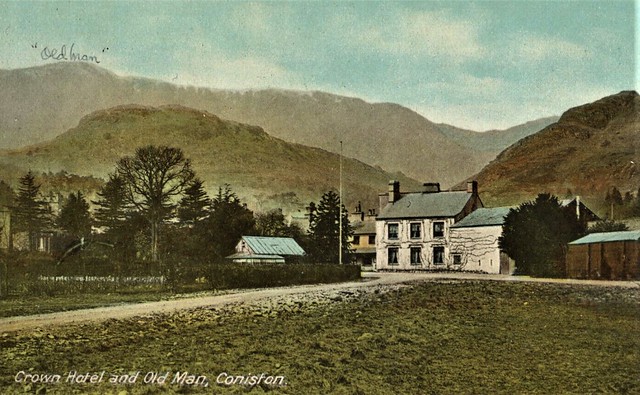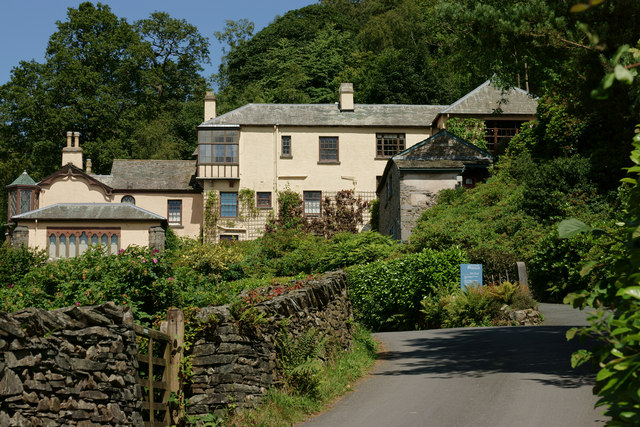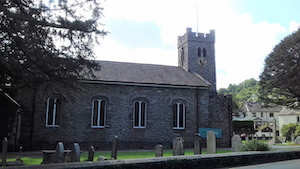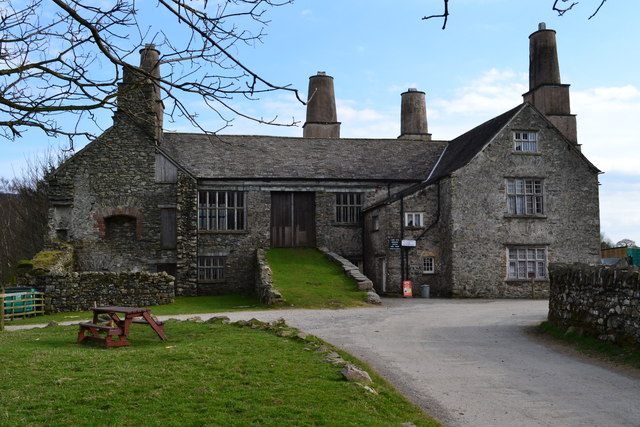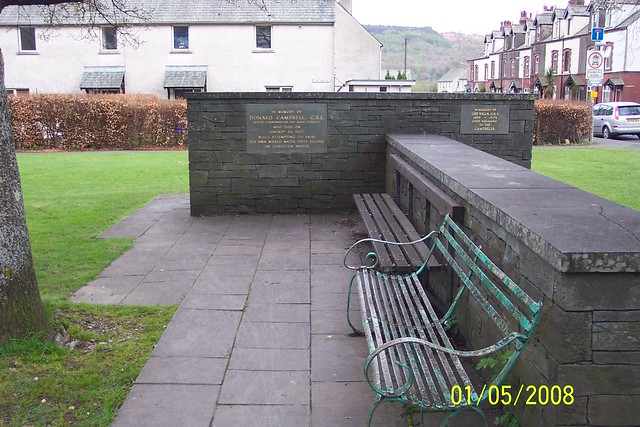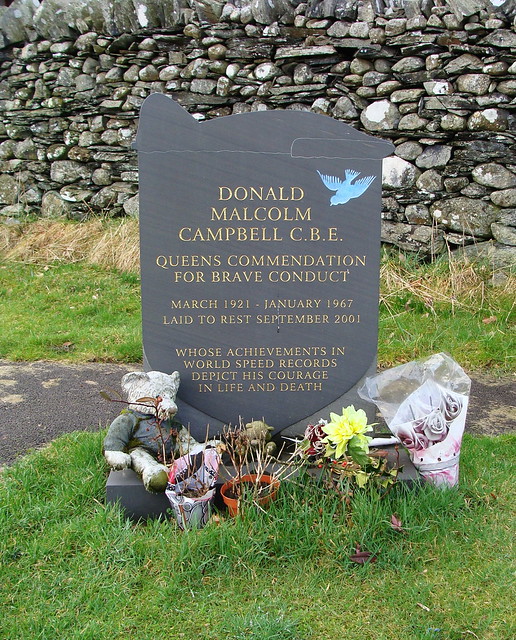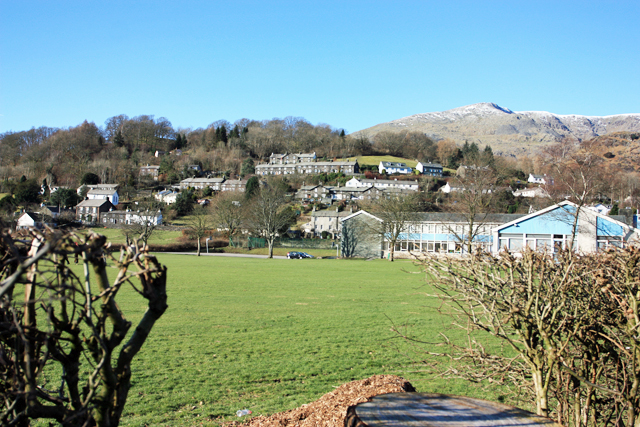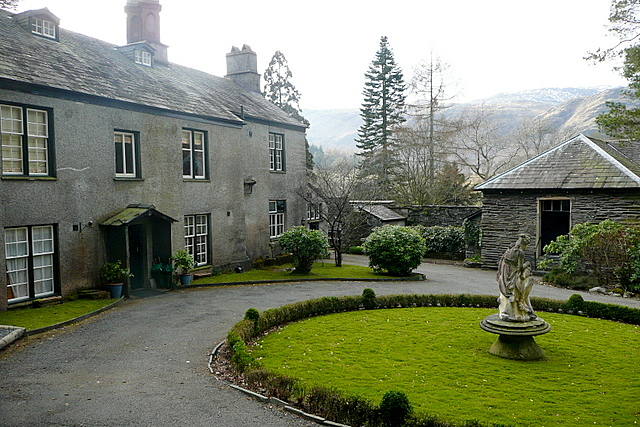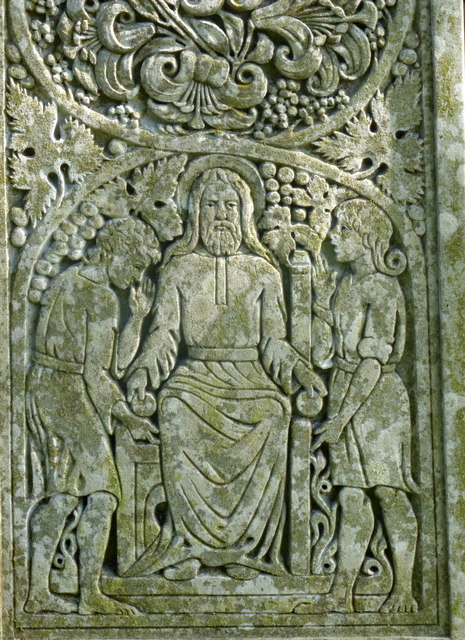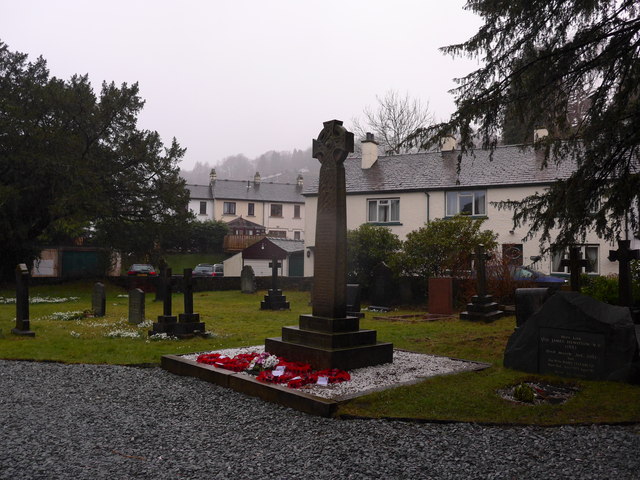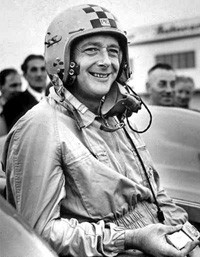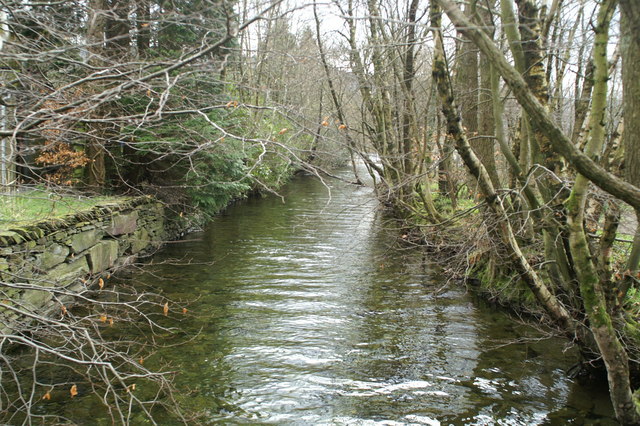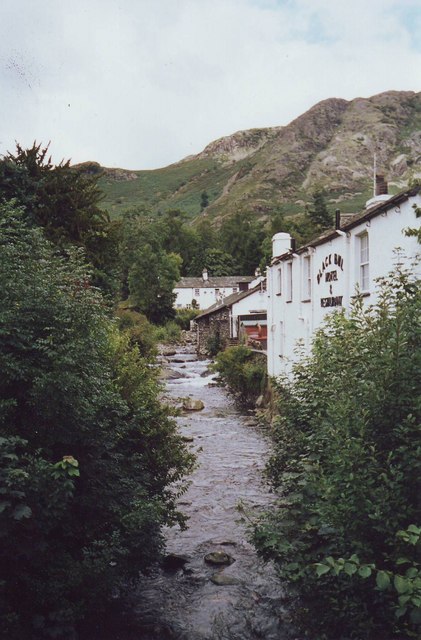Coniston
Coniston is a village and civil parish in the Furness region of Cumbria, England. Historically part of Lancashire, it is located in the southern part of the Lake District National Park, between Coniston Water, the third longest lake in the Lake District and Coniston Old Man; about 25 miles (40 km) north east of Barrow-in-Furness.
Geography and administration
Coniston is located on the western shore of the northern end of Coniston Water. It sits at the mouth of Coppermines Valley and Yewdale Beck, which descend from the Coniston Fells, historically the location of ore and slate mining. Coniston's location thus developed as a farming village and transport hub, serving these areas. Coniston was situated in the very north-west of the historic county of Lancashire, with Coniston Old Man forming the county's highest point. Today Coniston forms part of the Lake District National Park, the administrative county of Cumbria and the local government district of South Lakeland.
Governance
Coniston is part of the electoral ward called Coniston and Crake Valley. The total population of this ward as taken at the 2011 Census was 1,575.
Etymology
Coniston was called "Coningeston" in the 12th century, a name derived from konungr, the Old Norse for king, and tūn the Old English for farmstead or village. This would give the village the title of "The king's estate". Ekwall speculated that this town could have been the centre of a 'small Scandinavian mountain kingdom'.
History
Coniston grew as both a farming village, and to serve local copper and slate mines. It grew in popularity as a tourist location during the Victorian era, thanks partially to the construction of a branch of the Furness Railway, which opened to passenger traffic in 1859 and terminated at Coniston railway station.
The poet and social critic John Ruskin also popularised the village, buying the mansion Brantwood on the eastern side of Coniston Water in 1871. Before his death, he rejected the option to be buried in Westminster Abbey, instead being laid to rest in the churchyard of St Andrew's, Coniston. Ruskin Museum, established in 1901, is both a memorial to Ruskin and a local museum covering the history and heritage of Coniston Water and the Lake District.
The painter Henry Robinson Hall lived and worked in the village in the late 1910s and early 1920s.
Donald Campbell added to the profile of the village and lake when he broke four World Water Speed Records on the lake in the 1950s. He died attempting to break the world water speed record for the eighth time in 1967, when his jet boat, "Bluebird K7", crashed at , having already set the record for the seventh time at Dumbleyung Lake, Western Australia in 1964. His body and boat (Bluebird K7) were discovered and recovered by divers in 2001 and he was buried in the new graveyard in Coniston in September 2001. A new wing has been built at the Ruskin Museum to accommodate the fully restored Bluebird K7 boat. It opened in late 2009 with the K7 due to arrive in late 2011 or early 2012.
The whole village was powered by hydroelectricity during the 1920s but this became so heavily taxed that the people there were forced to return to the national grid. Since 7 March 2007 a hydro-electric scheme has been in use to power up to 300 homes; being sited near the original.
Leisure and tourism
The creation of the Lake District National Park in 1951 provided a boost to tourism, with attractions such as the Ruskin Museum and ferry services across the lake developing. Coniston is a popular spot for hill-walking and rock-climbing; there are fine walks to be had on the nearby Furness Fells and Grizedale Forest, and some of the finest rock in the Lake District on the eastern face of Dow Crag, from the village. The Grizedale Stages rally also takes place in Coniston, using the surrounding Grizedale and Broughton Moor (or Postlethwaite Allotment) forests. The village is also home to a number of hotels and two youth hostels, one at the edge of the village, the other in the nearby Coppermines Valley.
The village also has a football team, Coniston AFC, who play in the Furness Premier Football League Division Three and play their home games at Coniston sports and social centre.
Climate
As with the rest of the British Isles, Coniston experiences a maritime climate with cool summers and mild winters. Rainfall is high, at not much under 2000mm a year. Temperature extremes have ranged from during February 1986, to during August 1990. The nearest Met Office weather station is Grizedale, around 2.5 miles to the South East.
Mining and minerals
Two slate quarries still operate at Coniston, one in Coppermines Valley, the other at Brossen Stone on the east side of the Coniston Old Man. Both work Coniston's volcanic slates, being blue at Low-Brandy Crag in Coppermines Valley, and light green at Brossen Stone (bursting stone). The scenery around Coniston derives from Coniston Limestone and rocks of the Borrowdale Volcanic Group.
Services
Coniston is also an important local centre, with a secondary school (John Ruskin School), primary school (Coniston Church of England Primary School), bank, petrol station and other such services. It has also repeatedly been highly placed in the Village of the Year award, winning it in 1997.
Twinning
The village is twinned with Illiers-Combray. The French village is associated with Marcel Proust for whom Ruskin's work was a source of inspiration.
Visit the page: Coniston, Cumbria for references and further details. You can contribute to this article on Wikipedia.
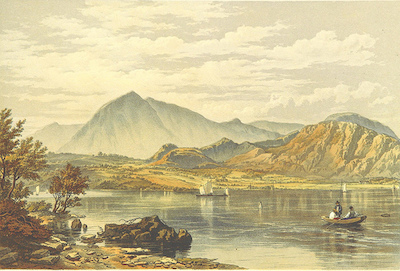
Co-Curate Page
Coniston Water
- Overview About Coniston Water Map Street View Coniston Water is 5 miles long and about half a mile wide, making it the third largest lake in the Lake District. It …
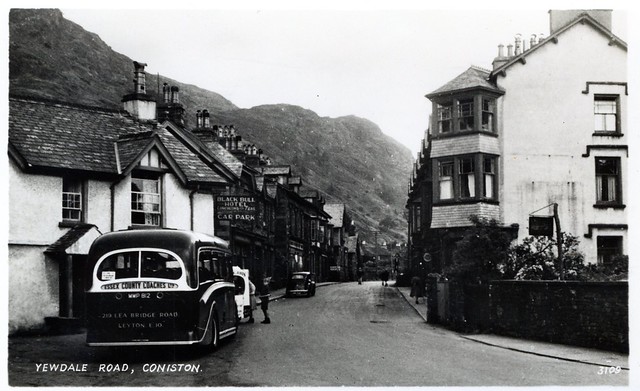
from Flickr (flickr)
MMP812 Essex Country Coaches Ltd, postcard of Coniston
Pinned by Simon Cotterill
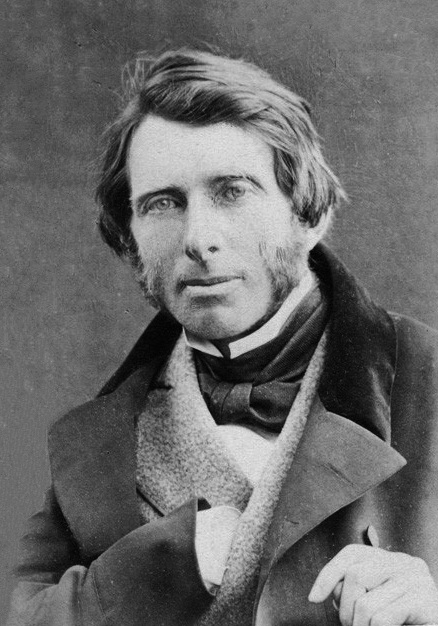
Co-Curate Page
John Ruskin (1819 - 1900)
- Overview About John Ruskin John Ruskin (1819 - 1900) was one of the leading visionaries and thinkers of the Victorian era. John Ruskin (8 February 1819 – 20 January 1900) …

from Flickr (flickr)
Coniston Church Gate rare old postcard near perfect condition. Beautiful colours
Pinned by Peter Smith
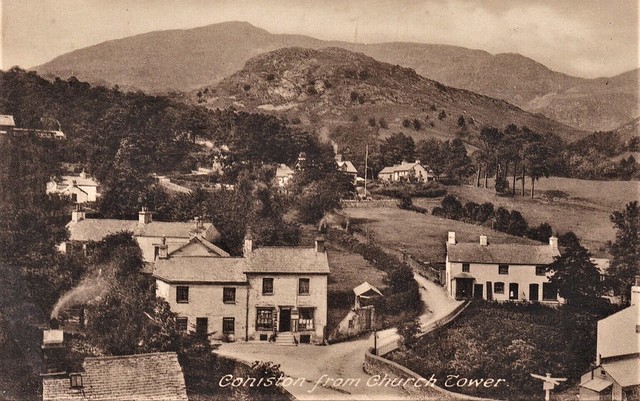
from Flickr (flickr)
Coniston from Church Tower Vintage Frith's Series English Lake District Postcard
Pinned by Peter Smith
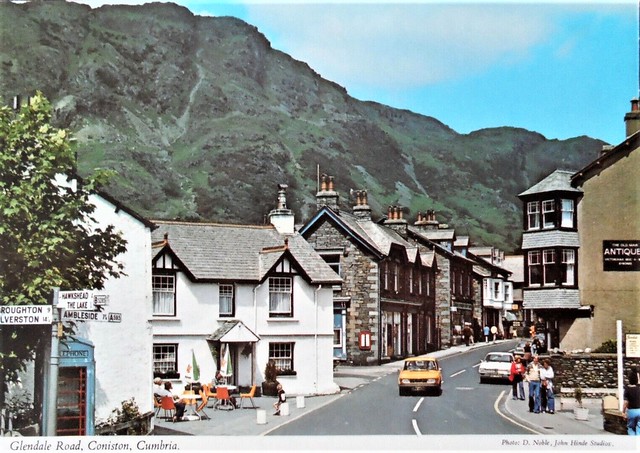
from Flickr (flickr)
Coniston Lake District CUMBRIA Photographic postcard of Glendale Road - UNSENT
Pinned by Peter Smith
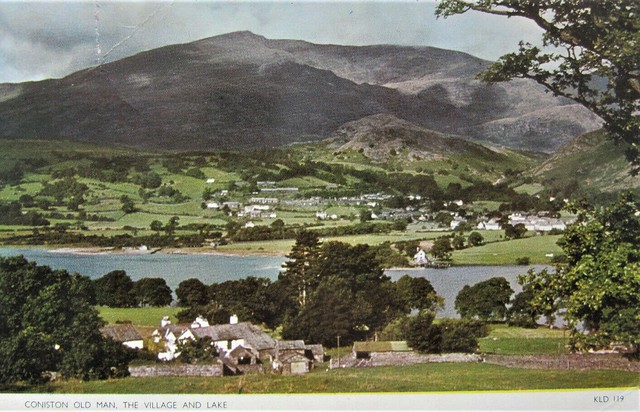
from Flickr (flickr)
Coniston Old Man, The Village and Lake - Vintage Cotman-Color Postcard (1958)
Pinned by Peter Smith

from Flickr (flickr)
CUMBRIA CONISTON OLD DELIVERY VAN TC2317 HORSE CART SIGNPOST ULVERSTON PHOTO CRD
Pinned by Peter Smith
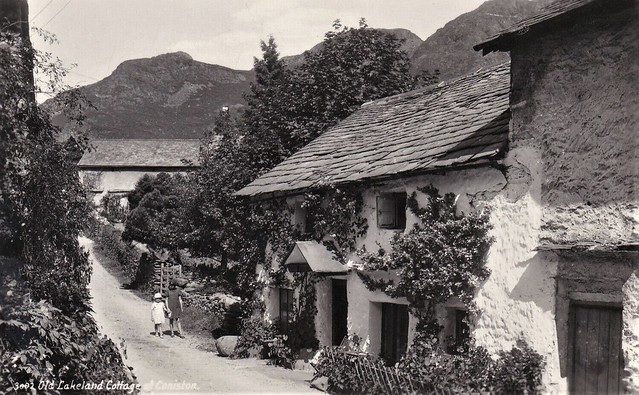
from Flickr (flickr)
Old Lakeland Cottage at Coniston, Lake District Cumbria Vintage Abraham Postcard
Pinned by Peter Smith

from Flickr (flickr)
RP Postcard showing Coniston Old Man, The Village & Lake.
Pinned by Peter Smith
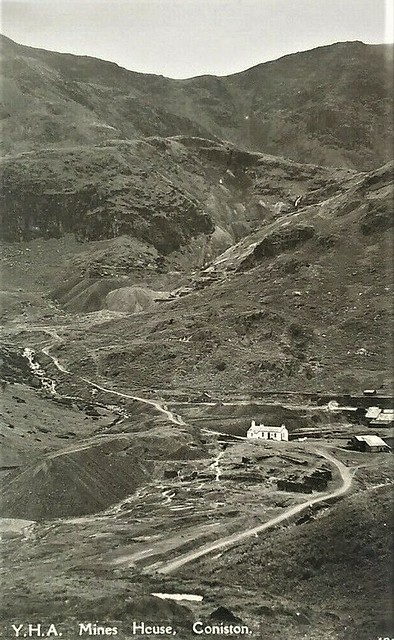
from Flickr (flickr)
Vintage Real Photo Postcard Youth Hostel Association Mines House Coniston H1B
Pinned by Peter Smith
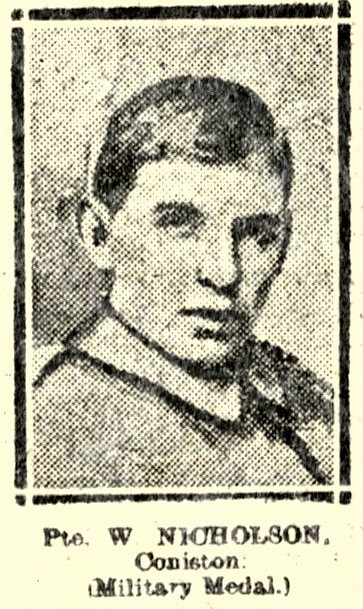
from IllustratedChronicles (flickr)
Pte. W. NICHOLSON, Coniston, (Awarded Military Medal).
Pinned by Simon Cotterill

from IllustratedChronicles (flickr)
Captain T.N. RILEY, R.E., Coniston, (Awarded D.S.C.).
Pinned by Simon Cotterill
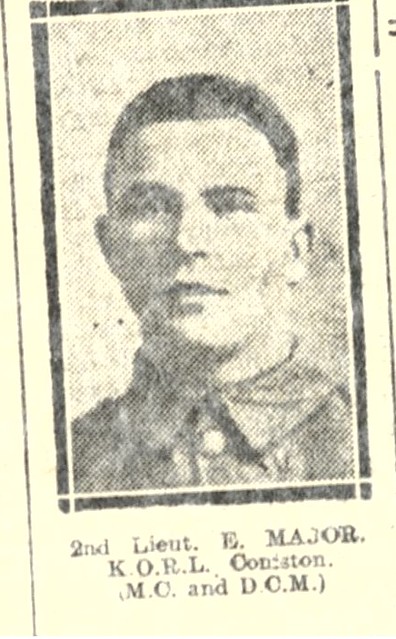
from IllustratedChronicles (flickr)
2nd Lieut. E. MAJOR, K.O.R.L., Coniston, (Awarded M.C. & D.C.M.).
Pinned by Simon Cotterill


Co-Curate Page
Coniston Water
- Overview About Coniston Water Map Street View Coniston Water is 5 miles long and about half a mile wide, making it the third largest lake in the Lake District. It …

from Flickr (flickr)
MMP812 Essex Country Coaches Ltd, postcard of Coniston
Pinned by Simon Cotterill

Co-Curate Page
John Ruskin (1819 - 1900)
- Overview About John Ruskin John Ruskin (1819 - 1900) was one of the leading visionaries and thinkers of the Victorian era. John Ruskin (8 February 1819 – 20 January 1900) …

from Flickr (flickr)
Coniston Church Gate rare old postcard near perfect condition. Beautiful colours
Pinned by Peter Smith

from Flickr (flickr)
Coniston from Church Tower Vintage Frith's Series English Lake District Postcard
Pinned by Peter Smith

from Flickr (flickr)
Coniston Lake District CUMBRIA Photographic postcard of Glendale Road - UNSENT
Pinned by Peter Smith

from Flickr (flickr)
Coniston Old Man, The Village and Lake - Vintage Cotman-Color Postcard (1958)
Pinned by Peter Smith

from Flickr (flickr)
CUMBRIA CONISTON OLD DELIVERY VAN TC2317 HORSE CART SIGNPOST ULVERSTON PHOTO CRD
Pinned by Peter Smith

from Flickr (flickr)
Old Lakeland Cottage at Coniston, Lake District Cumbria Vintage Abraham Postcard
Pinned by Peter Smith

from Flickr (flickr)
RP Postcard showing Coniston Old Man, The Village & Lake.
Pinned by Peter Smith

from Flickr (flickr)
Vintage Real Photo Postcard Youth Hostel Association Mines House Coniston H1B
Pinned by Peter Smith

from IllustratedChronicles (flickr)
Pte. W. NICHOLSON, Coniston, (Awarded Military Medal).
Pinned by Simon Cotterill

from IllustratedChronicles (flickr)
Captain T.N. RILEY, R.E., Coniston, (Awarded D.S.C.).
Pinned by Simon Cotterill

from IllustratedChronicles (flickr)
2nd Lieut. E. MAJOR, K.O.R.L., Coniston, (Awarded M.C. & D.C.M.).
Pinned by Simon Cotterill
